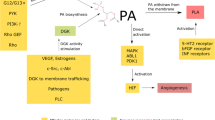Abstract
The effects of certain compounds on the in vitro growth rate and the sensitivity to doxorubicin of P388 murine leukaemia cell line and of a doxorubicin-resistant subline (P388/ADR) were studied. The calcium channel blocking activity of these compounds was evaluated by measuring their effects on the sodium-dependent and membrane potential-dependent calcium uptake in synaptic plasma membrane vesicles. At non-inhibitory concentrations, verapamil, dipyridamole, meclizine and nicardipine were highly active in restoring the sensitivity to doxorubicin of P388/ADR cells. Moderately active were propranolol, N-(beta-diethylaminoethyl)-N-(beta-hydroxy-beta-phenylethyl)-2,5-dich loranaline (MDL-6792), thioridazine and chlorocyclizine, while nifedipine, guanethidine, phentolamine, chloroquine and papaverine had zero or only minimal synergistic activity to doxorubicin in this cell line. Doxorubicin synergistic activity could not be demonstrated in the parent drug-sensitive cell line. No sodium-dependent or membrane potential-dependent calcium uptake could be demonstrated in vesicles prepared from plasma membranes of either cell line. There is no correlation between the ability of these compounds to inhibit calcium uptake in synaptic vesicles and their potency in restoring the sensitivity of P388/ADR cells to doxorubicin.
Similar content being viewed by others
Rights and permissions
About this article
Cite this article
Ramu, A., Spanier, R., Rahamimoff, H. et al. Restoration of doxorubicin responsiveness in doxorubicin-resistant P388 murine leukaemia cells. Br J Cancer 50, 501–507 (1984). https://doi.org/10.1038/bjc.1984.207
Issue Date:
DOI: https://doi.org/10.1038/bjc.1984.207
- Springer Nature Limited
This article is cited by
-
Thioridazine induces apoptosis by targeting the PI3K/Akt/mTOR pathway in cervical and endometrial cancer cells
Apoptosis (2012)
-
Synergy between verapamil and other multidrug-resistance modulators in model membranes
Journal of Biosciences (2007)
-
Membrane interactions of some catamphiphilic drugs and relation to their multidrug-resistance-reversing ability
Journal of Cancer Research and Clinical Oncology (1996)
-
Reversal of multidrug resistance by bis(phenylalkyl)amines and structurally related compounds
Cancer Chemotherapy and Pharmacology (1994)
-
Pharmacologic circumvention of multidrug resistance
Cytotechnology (1993)




